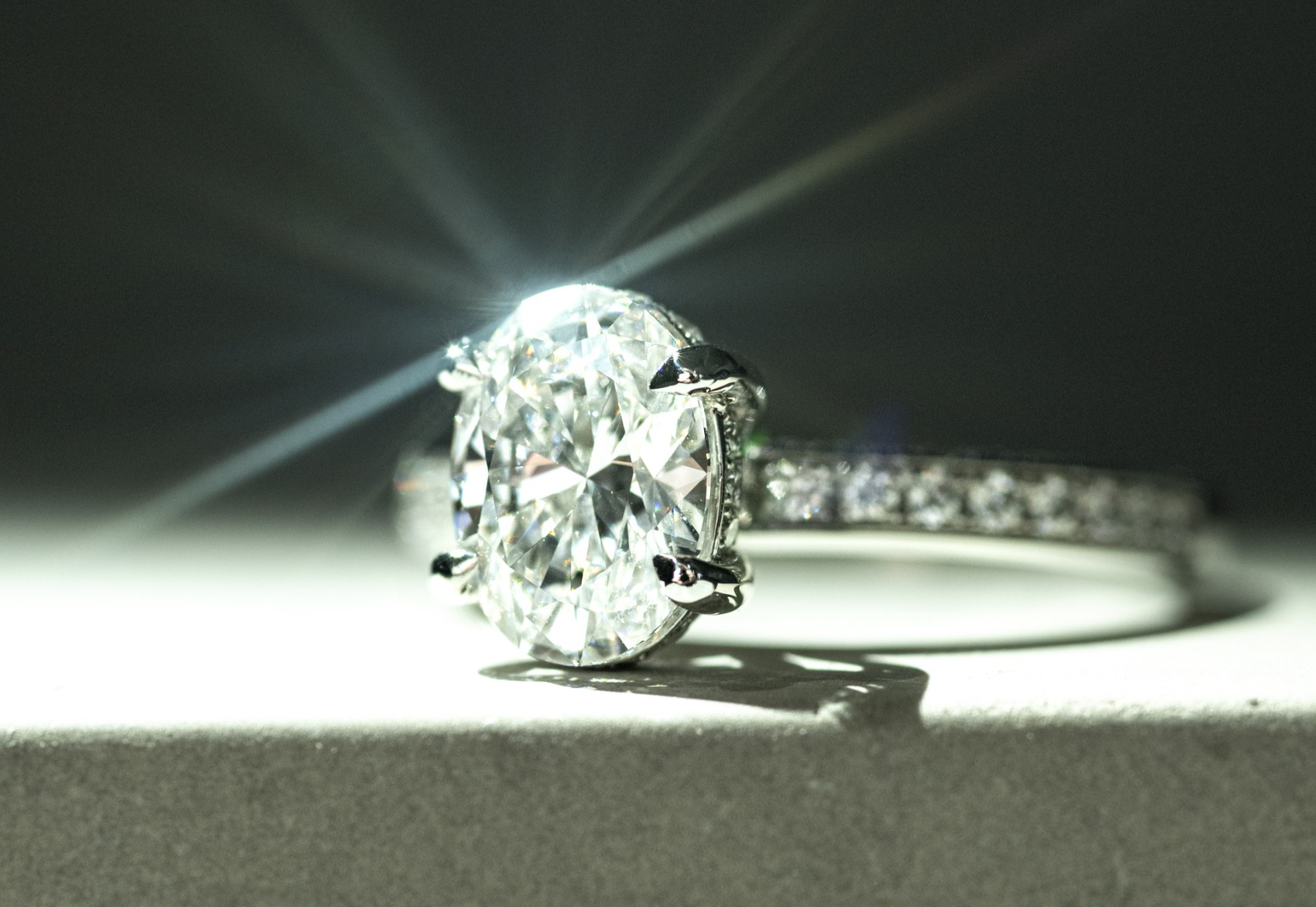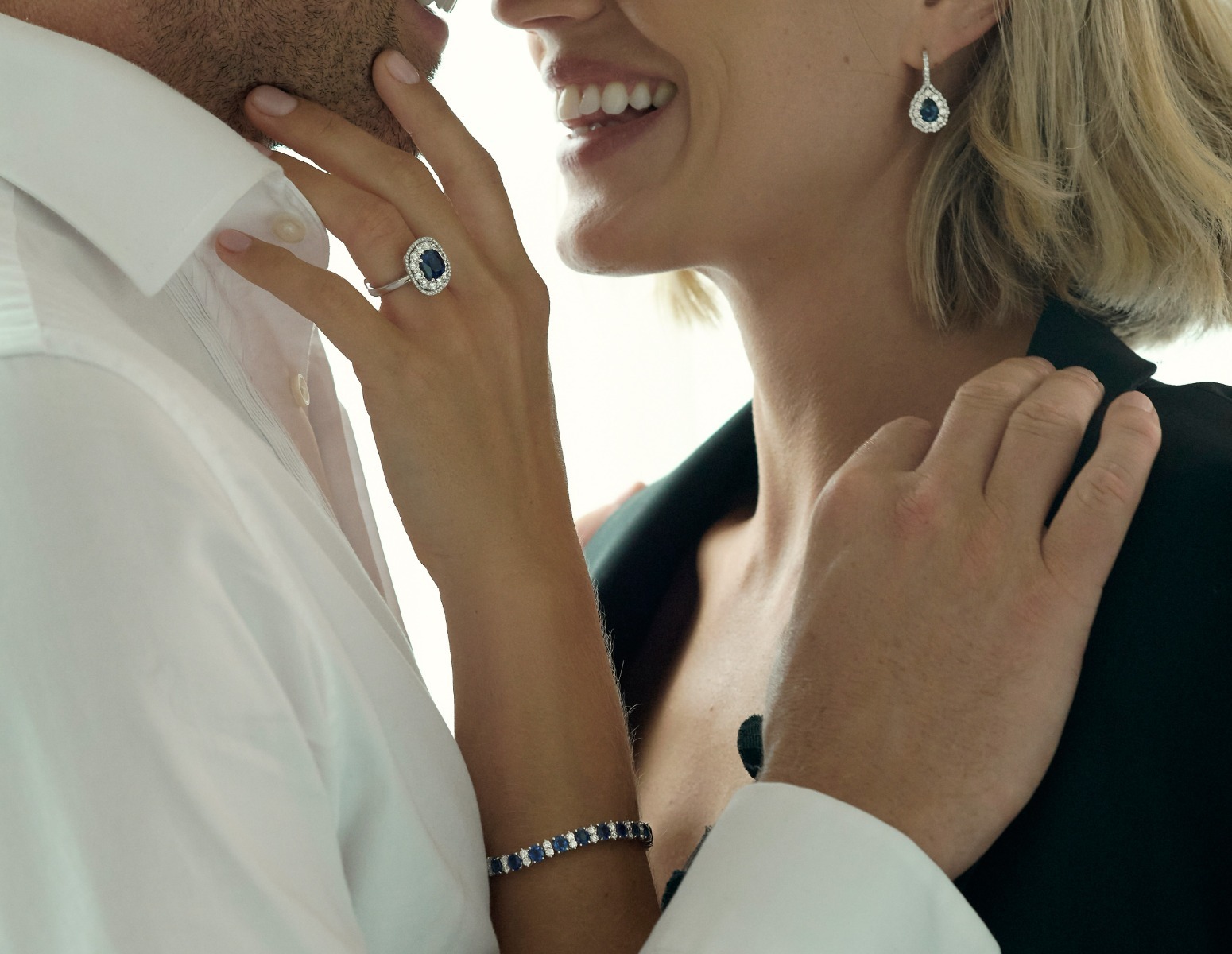Jewellery has always been a significant element of our self-expression. Throughout history, it has allowed us to show off different aspects of ourselves, be it our status or our creativity. If you are looking to reguvenate your style, or wear jewellery that is a bit more personal to you, why not try incorporating your birthstone into your jewellery collection?
What is a Birthstone?
Birthstones are gemstones that represent the period in which a person is born, which is usually based on either the month or zodiac sign you were born. Each birthstone is said to have its own unique meanings and qualities. In Ancient medicine, and still in practice today, crystals and gemstones have been believed to have healing properties, that can help people with both physical, emotional, and spiritual ailments.

Difference Between Birthstones and Gemstones
Gemstones and birthstones are often used interchangeably, but a good rule of thumb is this: Every birthstone is a gemstone, but not every gemstone is a birthstone.
Gemstones are minerals that are cut, polished and used in jewellery such as wedding bands and engagement rings. There are over 200 varieties of gemstones, and 12 out of those 200 represent birthstones.
The bigger question, before we get into the meaning of the birthstones, is, how did they come to be? What is their history?
History of Birthstones
The history of birthstones is a long and interesting one, dating back to the 1st century, when the writings of historian Josephus believed there was a connection between the twelve stones in Aaron’s breastplate, signifying the 12 tribes of Israel, and the months of the year and the twelve zodiac signs.
This progressed into the 8th and 9th centuries, when it became common practice to keep all 12 birthstones and wear one a month.
While the custom is a few centuries old, modern historians have debated the different dates. Sometime around the 19th Century, people in Poland began to wear specific birthstones to represent their month of birth. Finally, in 1912, the Jewelers of America Association formalised and standardised the modern list of birthstones that we know today.
January – Garnet
From its resemblance to pomegranate seeds, the garnet birthstone gets its name from the Latin word ‘Granatum’, for grain or seed. In ancient Greece, pomegranates were an important symbol in the mythological story of Hades’ abduction of the goddess Persephone. Because of this, many jewellery pieces discovered from this time in ancient Greece were set with red garnets.
In Biblical stories, garnet is also believed by some to have protected and guided Noah in the tale of Noah’s Ark. Some say Noah wore this birthstone around his neck to guide him in the dark, stormy nights during the 40 days and nights of the great flood.
Qualities of Garnet
Garnet is said to provide a protective influence and a calming stable strength to those that wear it and is thought to help with emotional healing. This birthstone can help balance the energy system, stimulate desires, and uplift your attitude. They are also seen as lucky stones for love, success, and achieving your goals.
February - Amethyst
In ancient Greek mythology, it is said that Dionysus, the God of Wine, was upset after being shunned by a passing mortal. The god sought revenge on the next passing soul, a woman called Amethyst, who admired the goddess Diana.
As Amethyst was chased by two tigers, courtesy of Dionysus, Diana witnessed what was happening and acted quickly, turning Amethyst into a Quartz statue. Although this saved Amethyst from the tigers, the spell could not be reversed. Dionysus was guilt-ridden when he realised his mistake, collapsing to the ground in front of the woman and spilling wine from his goblet onto the statue, creating the purple gemstone we now know as Amethyst.
Qualities of Amethyst
Amethyst is seen as a protective birthstone, much like how Amethyst was protected from the tigers in the story of Dionysus. It is said to have great protective energy as well as healing properties in many cultures and spiritual practices, with many people using Amethyst during meditation. Because of this, the Amethyst birthstone represents spiritual healing, calmness, and wisdom.

Image: Purple Amethyst ring paired with a yellow Citrine ring
March - Aquamarine
Inspired by its sea-water colour, Aquamarine’s name directly translates from Latin to ‘Water of the Sea’.
Ancient Roman mythology says the origin of Aquamarine was from the treasure chests of sirens, washed ashore to be discovered by sailors and commoners alike. This March birthstone was said to be sacred to the Roman god of the sea, Neptune, or the Greek equivalent, Poseidon. Sailors would wear Aquamarine with the likeness of this god carved into it to bring them luck and protection when out at sea.
In almost every culture and religion, Aquamarine has ties to water and the ocean, as its clear blue hues perfectly reflect everything humans loves and appreciate about our Earth's oceans and seas. In many cultures, this brithstone also represents the heavens, as they are a reflection of the ocean, shining back down on us with the same beauty and lifegiving abilities as held by the oceans.
Qualities of Aquamarine
It was also regarded by the ancients for fostering tranquillity, serenity, calmness, purification, and wisdom. Nowadays, the Aquamarine birthstone represents happiness, hope, and ever-lasting youth.
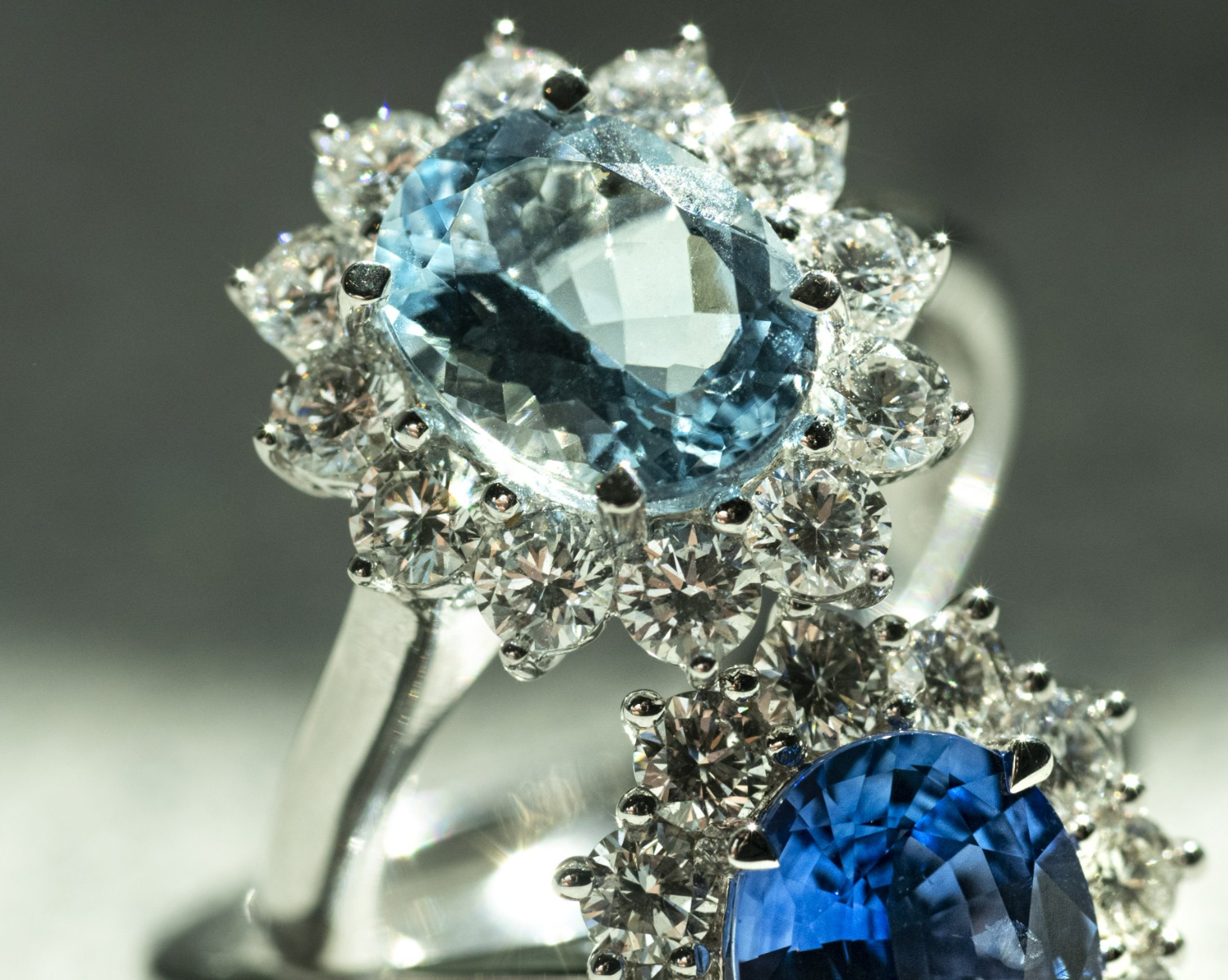
Image: Aquamarine Birthstone ring
April – Diamond:
Formed in the mantle, the heart of the Earth, the April birthstone, Diamond, gets its name from the Greek ‘adamas’ which means ‘unconquerable’. As the hardest and most valuable gemstones, this name is quite fitting. Diamonds are the only gemstone to be made up of a single element, crystalline carbon. Awarded a 10 on the Mohs scale, diamonds are the hardest known natural mineral, with most natural diamonds being between one billion to 3.3 billion years old. In fact, diamonds are so robust the only other mineral that can scratch a diamond is another diamond!
Greek philosophers believed that Diamonds were ‘alive’ with celestial spirits, while Romans thought them to be the tears of gods or splinters of falling stars, and Hindus believed they were created from lightning-striking rocks. From the Middle Ages up to the Renaissance period, they were said to hold a variety of mystical abilities to counter life’s struggles, including instilling bravery, courage, invincibility, strength, and virtue, as well as the power to banish nightmares.
Qualities of Diamond
Today, Diamond represents strength, love, and health, and are the most frequently used for engagement rings to signify your everlasting love.
Image: Diamond engagement ring
May - Emerald
As one of the most well-known members of the Beryl family, Emerald is renowned for its stunning, rare green colour. This gorgeous birthstone gets its name ‘Emerald’ from the Greek word ‘smaragdos’, which means ‘green gem’. Before scientific advances in the 18th Century, this name was used for any green-coloured gemstone.
Possibly mined as early as 3500 BC, Emerald mines were rediscovered in Egypt in the year 1816 by French mineralogist and miner, Frédéric Cailliaud. Cleopatra, the last Pharaoh of Egypt, was also famous for her Emeralds, with her understanding of the symbolic importance of prestige, power, and politics held by the birthstone.
Qualities of Emerald
Emeralds are said to represent good fortune, youth, balance, growth, peace, and foresight. Emeralds can also be seen as a symbol of rebirth, fertility, rejuvenation, and eternal spring, making this gemstone the perfect birthstone for the month of May.
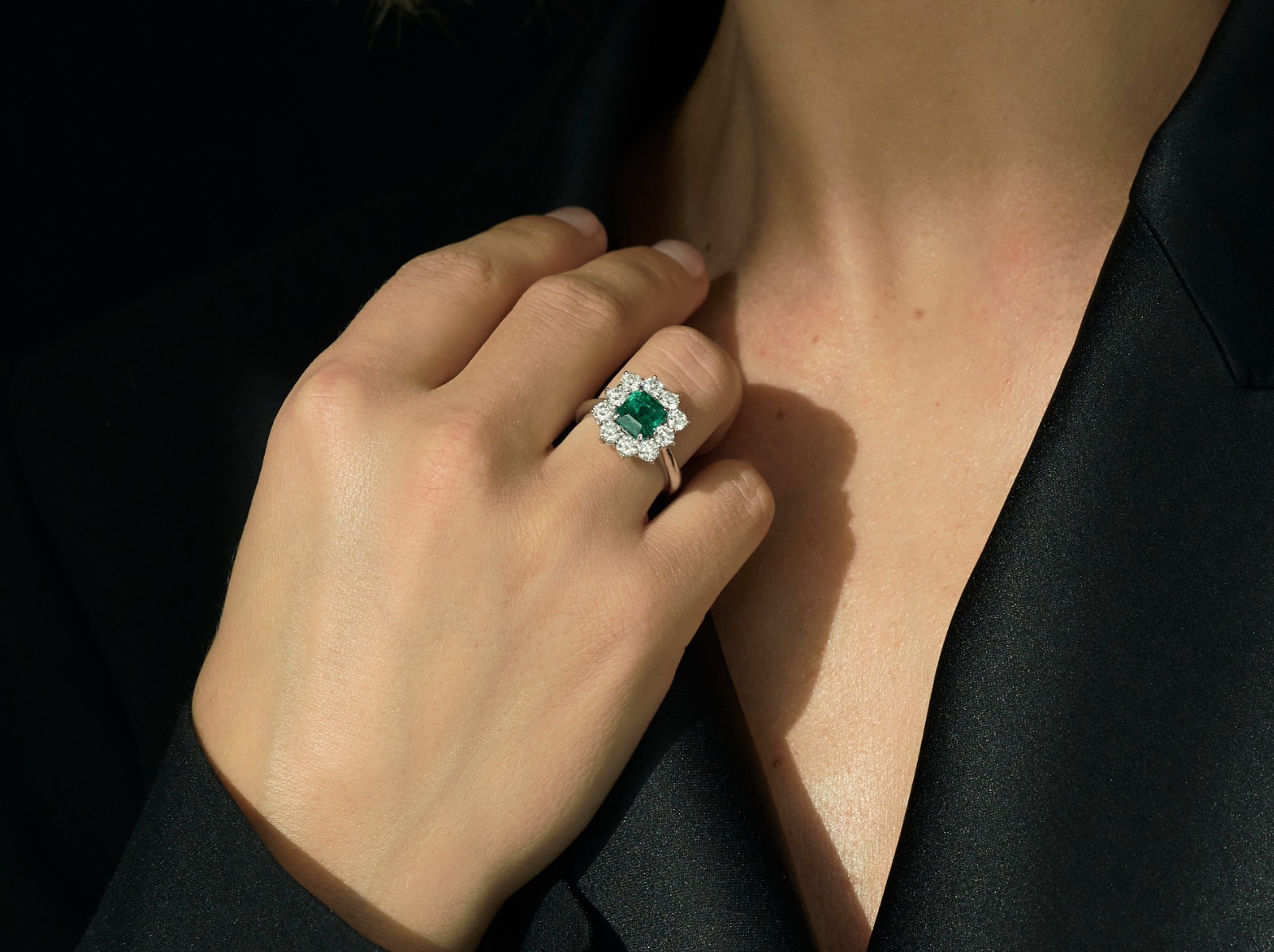
Image: Emerald Birthstone ring worn on a hand
June - Pearl
Although the month of June technically has three birthstones: Pearl, Alexandrite, and Moonstone, the most popular gemstone associated with this summer month is the Pearl. Derived from the ‘Perna’, the Latin word for ham, the name for Pearl is inspired by the shape of pearl mussels. This name is its most recent rendition since the 18th Century. Before this, they were called ‘unions’, referring to unity or a single large pearl.
As one of the most precious gemstones, the Pearl is a symbol of prestige and power. In ancient Rome, Pearls were seen as a status symbol and were the most expensive items you could buy with money. In Ancient Persia, people believed that Pearls were created by moonlight shining into open oyster shells, while the Ancient Chinese thought they were the tears of sharks. In Ancient Egypt, pearls represented Isis, the goddess of healing and life, while in the Greco-Roman pantheon, they were tears of joy wept by the goddess of love and beauty, Aphrodite (Venus).
Qualities of Pearl
Nowadays, Pearls are associated with good luck and are a symbol of wisdom, enlightenment, innocence, serenity, protection, and longevity.
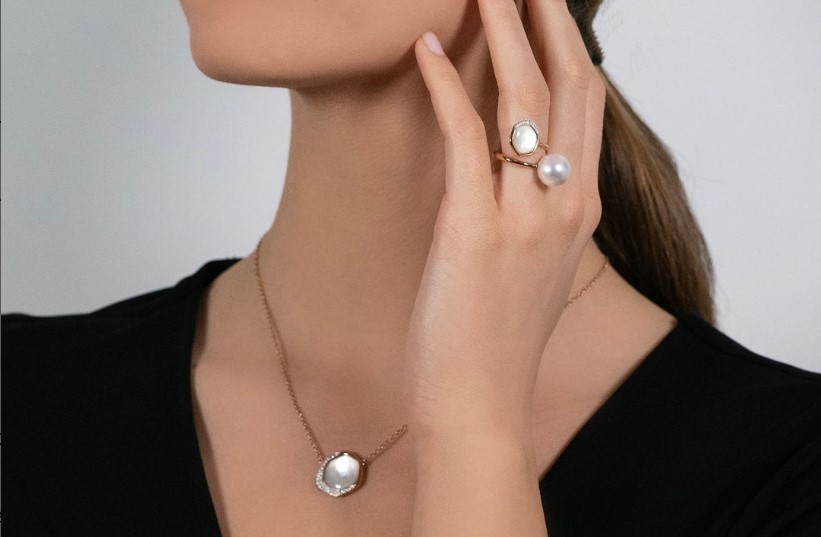
Image: Pearl Birthstone pendant and ring
July - Ruby
The famous red gem, Ruby, gets its name from the Latin word ‘ruber’, which means ‘red’. The intense crimson-red colour of rubies has mystified, entranced, and romanced others since it was first discovered over 2,500 years ago. Rubies from Shri Lanka may have been available to Greeks and Romans from as early as 480 BC. Rubies were once referred to as ‘ratnaraj’, meaning ‘king of gems’ by ancient Indians, as they believed rubies could bestow one with a long life.
Ancient Hindus believed that by offering rubies, considered by them more valuable than diamonds, to the god Krishna, would have them reborn as emperors in their next life.
Qualities of Ruby
Many cultures see Ruby as the gemstone of kings, found adorning the crowns of many monarchs. As such, it should be no surprise to know that Rubies are said to represent power, wealth, and protection.
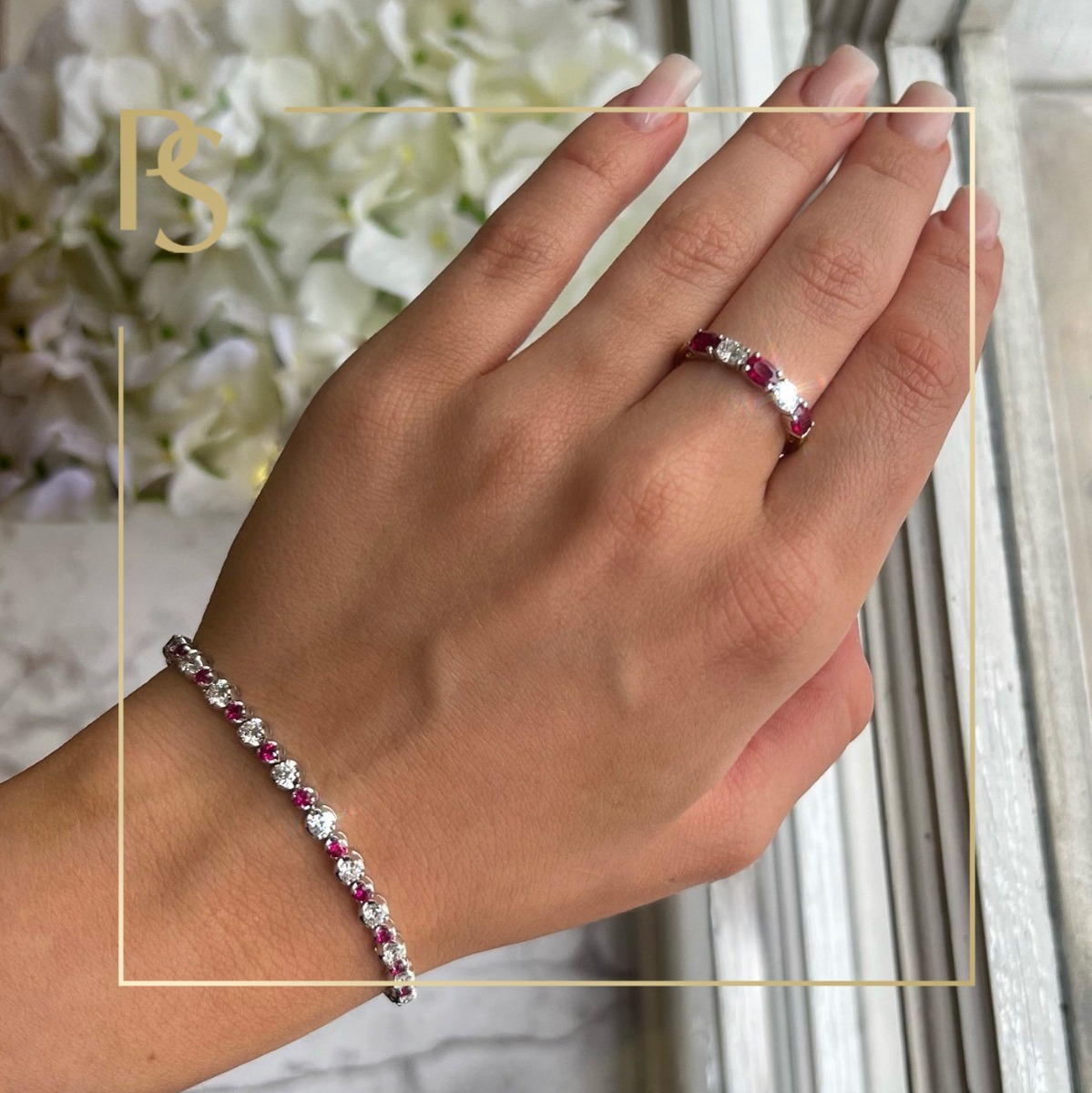
Image: Ruby Birthstone ring and bracelet on hand
August - Peridot
Derived from the Arabit word ‘faridat’, which simply means ‘gem’, the name Peridot may also come from the 13th Century Middle English ‘peridote’, meaning ‘bright spot’ or ‘button’. The Peridot gemstone also has an older, lesser-known name, Chrysolite, from the Greek word ‘chryso’, golden, ‘lithos’, stone.
Peridot has several significant historical ties, found adorning some of the world’s most beautiful royal and sacred items. The Ancient Egyptians began mining Peridot sometime around 1500 BC, with the golden green gemstone quickly gaining popularity among Egyptian jewellery and ornaments and were featured in the jewellery of some of Egypt’s most famous pharaohs, Tutankhamen and Cleopatra.
In Hawaiian folklore, Peridot is believed to be the tears of the goddess Pele. She is one of the most well-known and respected deities in Hawaiian culture, revered for her ability to create new land with the lava from her volcanoes. Because of this, the Peridot birthstone that is found in the lava in Hawaii is thought to come from Pele herself.
Qualities of Peridot
This gorgeous birthstone is said to represent prosperity and good fortune and is often associated with happiness, abundance, and light.
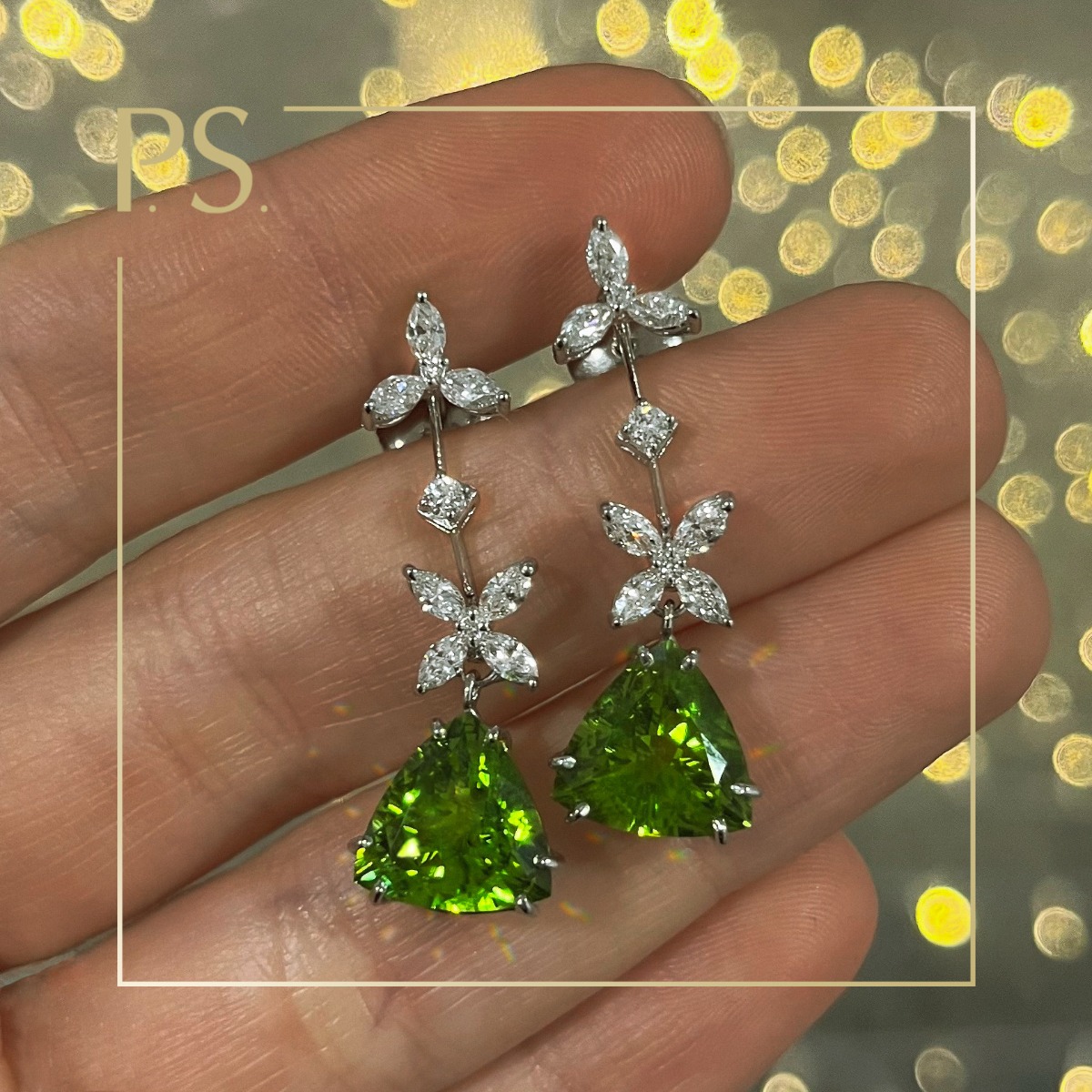
Image: Peridot Birthstone Earrings
September - Sapphire
The name for Sapphire is derived from the Latin word ‘sapphirus’, which itself comes from the Greek word ‘sappheiros’ for ‘blue’. It is believed that this word originates from either Hebrew ‘sappir’, meaning ‘stone’, or Sanskrit ‘sanipriya’ which was used to describe a dark gemstone as ‘sacred to Saturn’. Throughout history, the term ‘sappheiros’ used to refer to the lapis lazuli gemstone, while the gem we now call sapphire known as ‘hyakinthos’ in ancient Greece.
Ancient Greeks also believed Sapphires to be the reason the sky holds its deep blue colour. To them, if the Earth rested on a giant sapphire, it would explain the colour that encompasses the Earth’s entire existence. Because of this, this birthstone is believed to hold extensive power.
Qualities of Sapphire
As with many other birthstones, Blue Sapphires often appear in mythological and religious narratives. The ancient Greeks would wear Sapphires as a symbol of wisdom, and even nowadays, Sapphires are said to represent intelligence, education, and the ability to make wise decisions.
Image: Woman wearing Sapphire Birthstone and Diamond bracelet, ring, and earrings
October - Opal
This ethereal birthstone gets its name from the Roman ‘opalus’ and the Greek ‘opallios’, meaning ‘to see a change’. The Ancient Greeks and Romans would often compare the beauty of the Opal to that of a favourite child. And while both the Greeks and Romans cherished the Opal, they did so for different reasons. The Greeks believed it gave individuals the ability of foresight, invisibility, and prophecy, while the Romans saw Opal as a symbol of hope, love, and purity.
In Australian legends, the world’s creator visited Earth on a rainbow and wherever his feet touched, he left behind pieces of rainbow trapped in stone. These rainbow stones are what we know as Opals.
Qualities of Opal
To this day, many people believe Opals hold the power to promote romance and passion, and have long been a symbol of hope, purity, and truth.
November - Topaz
November is another month that has more than one birthstone, associated with both Topaz and Citrine. However, the gemstone most commonly linked with this month would be the highly prized Topaz. The name for this unique gemstone is believed to have come from either the Sanskrit ‘tapaz’, meaning ‘fire’, or ‘topazios’, the Greek name for an island called Zabargad, located in the red sea and the ancient source of the Peridot gemstone. The ancient Egyptians referred to Topaz as the ‘gem of the sun’, as they believed it got its golden-yellow hues from the sun god, Ra.
While they are most well recognised for this golden yellow, Topaz can be found in a variety of colours, such as blue, green, pink, and red. Ancient Greeks believed Topaz could increase the strength of its wearer, and Ancient Egyptians would often wear this birthstone as an amulet to protect them from harm.
Qualities of Topaz
Although most popularly associated with wealth, much Topaz symbolism and lore links with subjects of love, health, and astrology.

Image: Blue Topaz ring worn on hand
December - Turquoise
One of the coldest months of the year, it is most fitting to have not one, but three blue birthstones. Turquoise, Blue Topaz, and Zircon are all birthstones for those born in the month of December, but to keep it simple, we will focus on the gorgeous Turquoise. In modern days, Turquoise gets its name from its unique blue-green colouring, but throughout the ages, it received many other names from different cultures around the world. In Persian, it is called ‘ferozah’, meaning ‘victorious’ and up until the 13th Century in Europe it was called ‘calläis’, for ‘beautiful gem’, believed to be derived from the Roman gem names ‘callainos’ or ‘callaina’.
Qualities of Turquoise
This uniquely beautiful gemstone is said to bring luck, peace, and protection, and is a symbol of wisdom, tranquillity, protection, good fortune, and hope. As a result, Turquoise can be found adorning shields, weapons, and bridles or warriors going to battle throughout history.

Birthstones have played a significant role in the history of our jewellery and cultures, and and continue to do so even to this day. Every birthstone has its own special story behind its name and history, which often play into its unique powers and symbolism.
We hope this short overview of birthstones has been insightful and aided you in learning more about your own birthstone. If you feel inspired to incorporate more of your special gemstone into your jewellery collection, why not visit us in store to see our selection of beautiful pieces. Or if you’d like to create a unique piece of jewellery for you or a loved one, feel free to book an appointment and speak to a member of our sales team, who would be delighted to help turn your dream piece into a beautiful reality!



